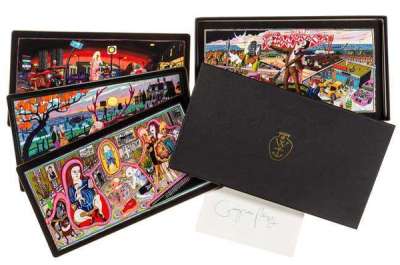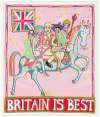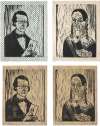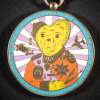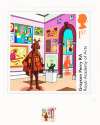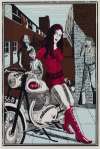The
Vanity Of Small Differences
Grayson Perry’s series of six tapestries, The Vanity Of Small Differences, are presented here in lithographic form. Inspired by William Hogarth’s The Rake’s Progress, the series brilliantly attests to the artist’s fascination with class, consumer culture and taste.
Grayson Perry The Vanity Of Small Differences For sale
The Vanity Of Small Differences Value (5 Years)
Sales data across the The Vanity Of Small Differences series by Grayson Perry varies by print. While standout works have sold at auction for up to £900, other editions in the series remain rare to market or have yet to appear publicly for sale. Of those tracked, average selling prices have ranged from £900 to £900, with an annual growth rate of 18.52% across available data. Collectors should note the discrepancy in performance between more visible and lesser-seen editions when considering value potential in this series.
The Vanity Of Small Differences Market value
Auction Results
| Artwork | Auction Date | Auction House | Return to Seller | Hammer Price | Buyer Paid |
|---|---|---|---|---|---|
 The Vanity Of Small Differences Grayson Perry Signed Print | 27 Sept 2019 | Forum Auctions London | £340 | £400 | £500 |
Sell Your Art
with Us
with Us
Join Our Network of Collectors. Buy, Sell and Track Demand
Meaning & Analysis
Perhaps more representative of his works than any other series, Grayson Perry’s series of six tapestries, The Vanity Of Small Differences, brilliantly attests to the artist’s fascination with consumerism, consumer culture and taste.
Perry is not the first to engage in such an exploration of modern-day consumerism, having been preceded most notably by Andy Warhol, Jeff Koons, Marcel Duchamp or Damien Hirst. Situating himself within this rich and prolific artistic genealogy, the Turner-prize winner puts a spin on the works of his colleagues. Rather than using found objects representative of consumer culture and depicting them on canvas, as Warhol and Hirst do, or using the objects themselves, or enlarged metal castings of them, as Duchamp and Koons, Perry relies on a strategic visual narrative, woven throughout the tapestries.
